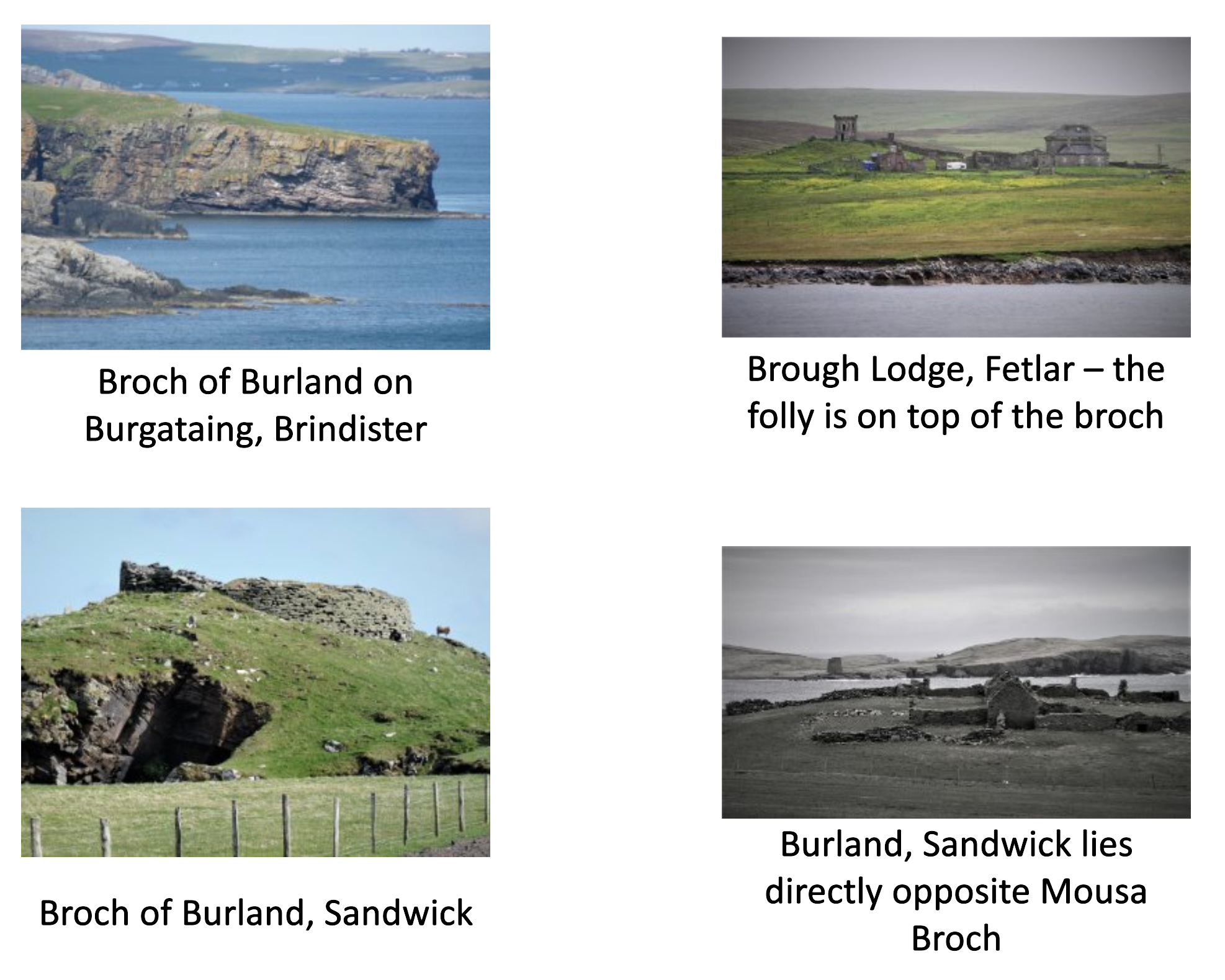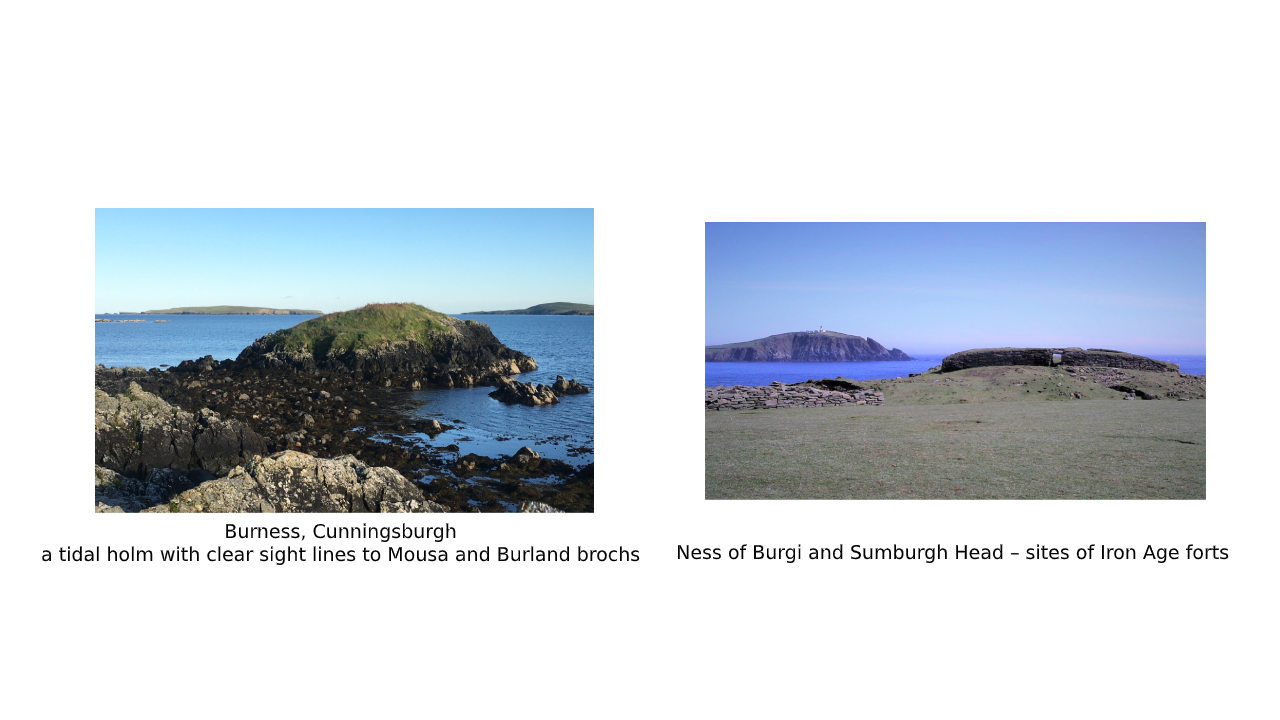Place name of the week – Brochs and Forts
Published: 09 July 2020
Place-name of the week – Brochs and Forts
Studying place names can help identify most of Shetland’s Iron Age brochs and forts. Both structures were named borg (fortification) by the incoming Norsemen, resulting in many bur, burra, burgh, broch, brough, burga and burgi names today.

Borg names were usually applied to adjacent geographical landmarks, like taings, nesses or geos, or used for croft or settlement names. In Unst, Burrafirth takes its name from the broch next to Burgar Stack, and Burga Sand, Upper and Lower Burrigarth are close to the broch at Underhoull. In North Roe you find Burgataing and Burravoe, whilst in Sandsting, Burga Stacks and Burri Geo are near to the Broch of Culswick, and Burrahill and Burraland at Sandsound suggest another site. Burra means broch isle, so there is no need to add another “Isle” onto the end of the place-name.
Yell place-names include Brough, Burgistack, Burgi Geos, Burrataing, Burravoe, Gossabrough and Buraness, whilst Fetlar has Snabrough, Strandibroch and Burgalstou. On the Westside you find Burraland, Footabrough, Burga Water, Brough Skerries, Stourbrough, Noonsbrough and East and West Burrafirth, and the south mainland yields Burland, Burgataing, Burgi Stacks, Burralee, Cunningsburgh, Burness, Burgi Ayre, Burgadies, Brough Geo, Brough Head, Scousburgh, Ness of Burgi and Sumburgh. 
Documents and maps include early name forms: the Icelandic sagas record Moseyarborg (Mousa Broch) providing shelter for an eloping couple around the year 900 and surviving an attack by Jarl Harald Maddadarson in 1153. Borgarfirði (Burrafirth) appears in Shetland’s earliest document of 1299 and Fotabergh (Footabrough) is in a 1355 conveyance.
Most brochs and forts had clear views out to sea and guarded the entrances of voes and harbours, with the smaller forts usually located in more inaccessible outposts. The seemingly inland structures at Brough in Unst and Lunabister and Brow, Dunrossness were once at voeheads before falling sea levels created the Lochs of Cliff and Spiggie. Some brochs and forts are located on lochs and others on holms, these include Burwick in Scalloway, Burland, Trondra, and Burness, Cunningsburgh.
Sumburgh, meaning south fortification, was defended by forts on either side of West Voe – at Sumburgh Head and two on the Ness of Burgi. The former was cleared to make way for Shetland’s first lighthouse built in 1821, but the fort is recorded on early maps and remembered in a fishing meid – Water in Burgidale which refers to the dale between Sumburgh Head and the Mid Head. The Unst fishing ground Burgiskurs takes its name from Brough Holm in Da Westing.
Other structures erected on top of brochs or forts include the folly at Brough Lodge, Fetlar, Vidlin’s Methodist Chapel, the churchyard at Culliesbrough, Bressay and the small lighthouse at Mossbank. There the place name has also disappeared – in the 18th century the village of Burraness was renamed Mossbank after a landlord’s house.
A few brochs and forts were called Pechts or Picts Hoose or Castle, such as the fort at Aywick. Please share information and photos of any brochs and forts you have visited by emailing placenames@shetlandamenity.org
Learn more about Culswick and Buraness brochs in Regional Archaeologist Val Turner’s Off the Beaten Track 11.
Eileen Brooke-Freeman, Shetland Place Names expert, July 2020
We hope you have enjoyed this blog.  We rely on the generous support of our funders and supporters to continue our work on behalf of Shetland. Everything we do is about
We rely on the generous support of our funders and supporters to continue our work on behalf of Shetland. Everything we do is about

